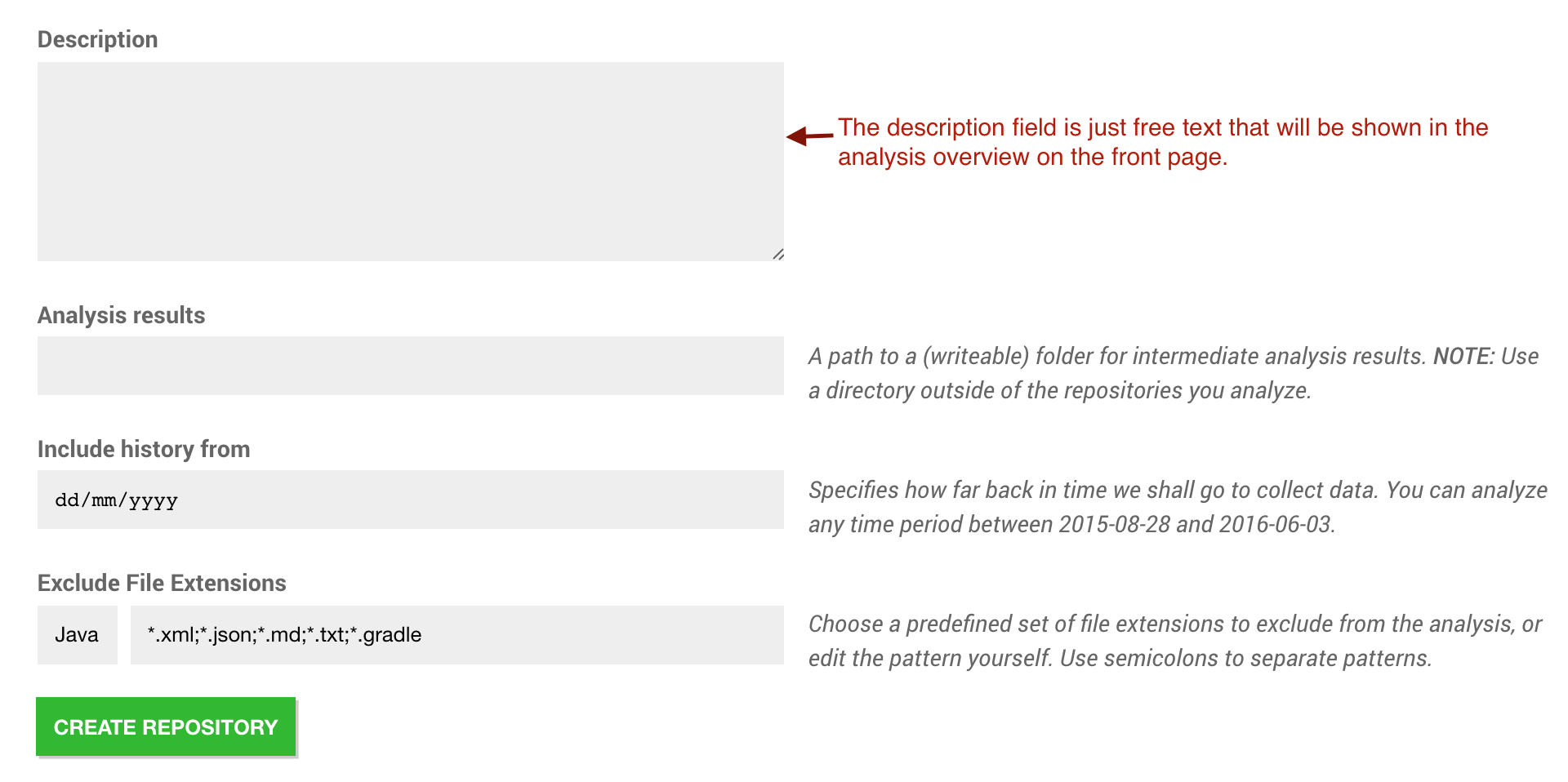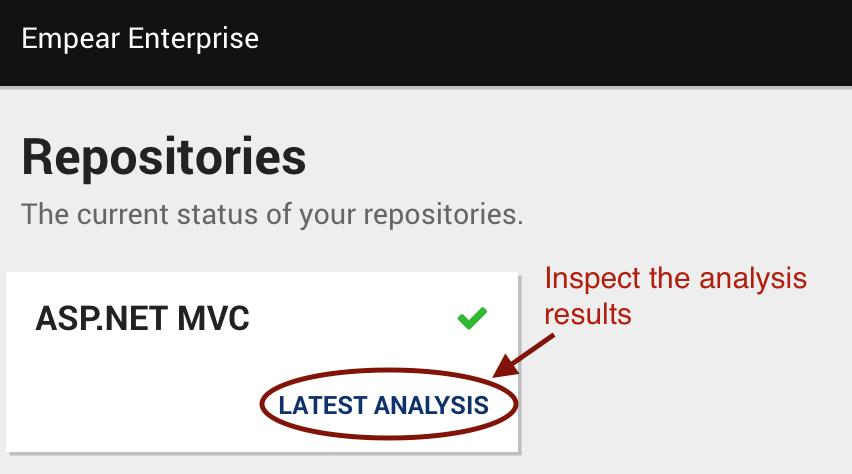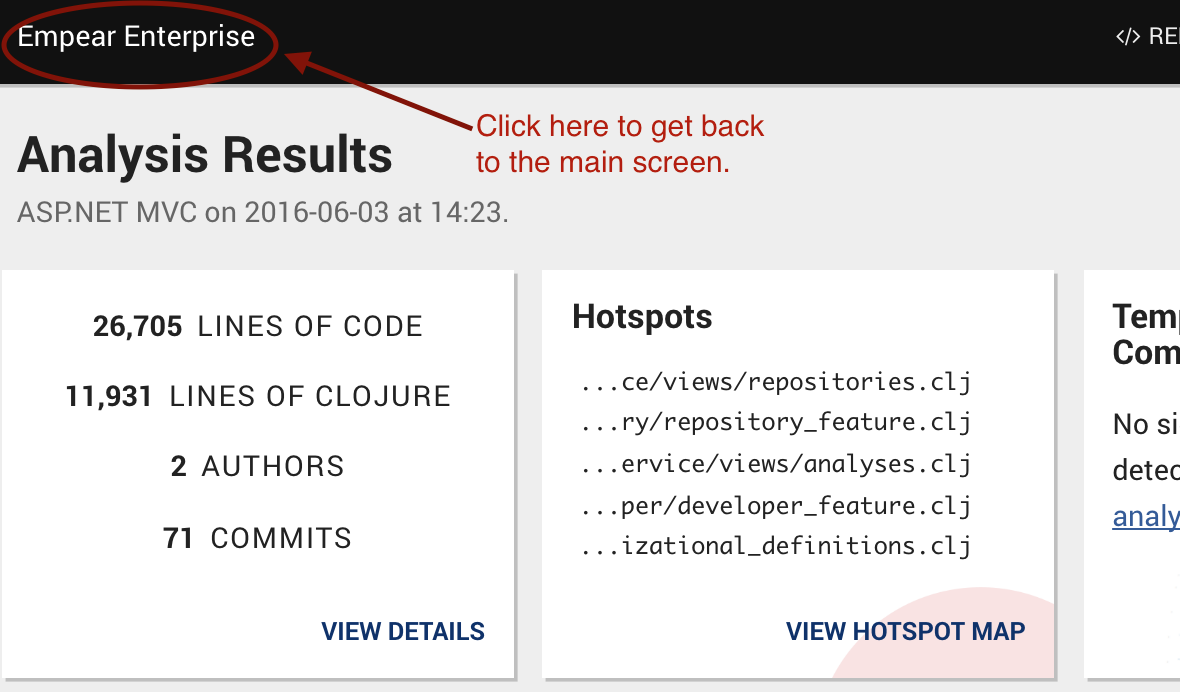Run an Analysis¶
Configure an Analysis by creating a new repository¶
Your first step is to create and configure a repository. You do that by clicking on the “Create New Repository” button (see Fig. 3).

Fig. 3 Click on the button to configure a repository for analysis.
Once you click on the “Create New Repository” button you are prompted with a name for the analysis configuration and a path to the Git repositories (see Fig. 4).

Fig. 4 Specify the path to your Git repository.
In the dialog above, just type (or copy-paste) the path to your local Git repository clone. If you want to analyze a system made of multiple repositories you just keep adding their paths in the dialog above.
Once you click “Continue”, you arrive at the “Repository Details” page (see Fig. 5). There are a number of important configuration options in this step. The Guides include advice on how you select an analysis period. When in doubt, specify the earliest possible starting date as indicated in the help text.
NOTE: It’s important that the Analysis Results file folder that you specify is writeable for the Tomcat user; all analysis result content will be stored there.

Fig. 5 The detailed configuration lets you specify analysis period and a result path.
Once you’ve created the repository you’ll arrive at its configuration details. Normally you don’t need to change any of these since they all have sensible defaults. However, you may want to look at your Analysis Plan. Go to the “Analysis Plan” configuration as shown in Fig. 6 and specify a suitable interval, for example once every night.

Fig. 6 Your analysis plan specifies how often an analysis is run.
From now on, Empear Enterprise will run all analyses automatically according to your plan. However, the first time you may want to get immediate results on your codebase. You do that by forcing an analysis as described in the next section.
Force an Analysis¶
Click on the Overview tab and push the “Analyze Now” button:

Fig. 7 The Overview tab lets you force an analysis to run immediately.
Run a Retrospective¶
Empear Enterprise also includes the option to run an analysis tailored to a Retrospective. You just push the “Retrospective” button located in the Overview tab and follow the instructions.
For a detailed description of the use cases for Retrospectives, read the article The Happy Marriage of Retrospectives and Software Evolution.
Find your way around¶
We’ve worked to make Empear Enterprise as easy as possible for you to use. Basically, you just need to remember three things:
Click on the title of your analysis configuration to access the configuration options, define teams, force analyses, etc.
Click on the Latest Analysis link to inspect your analysis results.
Click on the “Empear Enterprise” text to return to the main screen, should you ever get lost.


